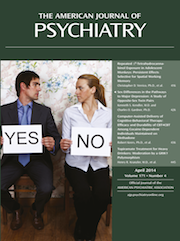Sharon Packer’s Cinema’s Sinister Psychiatrists takes readers on an exhaustively researched journey through the history of psychiatry on the silver screen. Packer’s work reviews cinematic depictions of mental health “professionals,” including Hannibal Lecter, Nurse Ratched, and a host of other cinema psychotherapists, hypnotists, asylum directors and the like, from the late 1800s through today. Strikingly, in spite of considerable advances in the quality of mental health treatment over the past century, film depictions of psychiatrists have remained overwhelmingly negative over time.
Packer interweaves film history with psychiatric history, highlighting cinematic portrayals of psychiatrists who embodied critical issues faced by the field of psychiatry, such as deplorably run asylums and involuntary treatment, during various periods in the past century. A strong undercurrent in Packer’s book is the idea that while manifestations of “sinister” psychiatrists and other mental health professionals in film have fluctuated over time—from hypnotists to dream doctors to psychiatric nurses in the ilk of the infamous Nurse Ratched from
One Flew Over the Cuckoo’s Nest—the tenor of these portrayals has remained largely unchanged. Perhaps the quintessential sinister psychiatrist discussed by Packer is Dr. Hannibal Lecter, the star of five films to date, including
Hannibal and
Silence of the Lambs. The films portray Dr. Lecter as a psychiatrist who severely mistreats his patients, for example, by using a combination of drugs and hypnosis to convince his patient in
Hannibal (a pedophile receiving court-ordered treatment) to cut off his face and feed the flesh to the dogs. If this weren’t sinister enough, Hannibal Lecter is also a cannibal, admittedly one of the more extreme dramatic devices used to characterize a sinister psychiatrist. In spite of large increases in the number of Americans seeking mental health treatment in past decades (
1), even recent films such as
Batman Begins and
Changeling tend to portray sinister psychiatrists who bear little resemblance to the mental health professionals seen by nearly 20% of Americans each year (
2).
Today, do film portrayals of sinister psychiatrists simply serve as good dramatic devices, integral to movie plots? Or, as some have asserted, do negative depictions of screen psychiatrists reinforce stigma and make those with mental illness reluctant to seek treatment (
3)? Communications research has shown that media depictions of specific individuals can influence public attitudes about entire groups of people (
4), giving theoretical basis to the idea that film portrayals of sinister psychiatrists may lead to public mistrust of mental health professionals. There is also reason to reject, as Packer does, the idea that film portrayals of manipulative, frightening, or even diabolic psychiatrists are an important driver of attitudes about mental health treatment. One in five Americans sees a mental health professional each year (
2), and most of us have a friend or family member who has been treated for mental illness (
1). Experience with mental health treatment—our own or someone else’s—likely has a much stronger influence on Americans’ attitudes toward psychiatry than cinematic portrayals of psychiatrists.
For Packer, screen psychiatrists are not created from imagination alone. Rather, film psychiatrists reflect the public’s ideas, fears, and hopes about the field of psychiatry. Packer describes a period in the late 1950s and early 1960s—a period she terms the “Golden Age” for cinema psychiatrists—when a spate of films portrayed psychiatrists as compassionate and unrealistically omniscient. The 1957 film The Three Faces of Eve, which Packer calls the “poster film” for the Golden Age of Psychiatry, portrays a psychiatrist named Dr. Luther, who successfully treats a housewife (Eve) with multiple personality disorder. The film paints a rosy picture of Dr. Luther’s treatment of Eve, who comes into his care after being abandoned by her husband and trying to kill her daughter. While she initially presents with two personalities—Eve White, a humble housewife, and Eve Black, a wild, party-going alter-ego—Dr. Luther’s treatment prompts a third, stable personality to emerge. At the end of the film, Eve (now called Jane, the name of the stable personality) remarries and reunites with her daughter. Typical of Golden Age films, Dr. Luther’s treatment of Eve was portrayed as effective and final. In contrast, the real-life woman the film was based on, Chris Costner Sizemore, reported exhibiting additional personalities and requiring ongoing treatment from multiple psychiatrists after her initial “cure.” In contrast to their demonized counterparts in the majority of films Packer reviewed, Golden Age film psychiatrists were idealized and imbued with healing powers far beyond the available treatments of the day. Packer credits this Golden Age of screen psychiatry to societal enthusiasm about the major medical successes of the 1950s, including development of the polio vaccine. When chlorpromazine was introduced in the United States in 1954, it seemed possible that mental illness, like polio, would soon be eliminated by benevolent, and heroic, doctors.
This is a book about how cinematic depictions of psychiatrists, dramatic devices though they are, reflect society’s views of psychiatry. In Packer’s view, we have the most to learn from cinematic portrayals of sinister psychiatrists, opposed to the short-lived idyllic portrayals of the late 1950s. For her, “if we want to understand society’s reaction to psychiatry, we need to examine the most common media representations (or misrepresentations) rather than the comparatively rare idyllic portrayals” (p. 5).
Part expansive film review, part detailed history of psychiatry; I recommend this book for film buffs and mental health practitioners alike.

